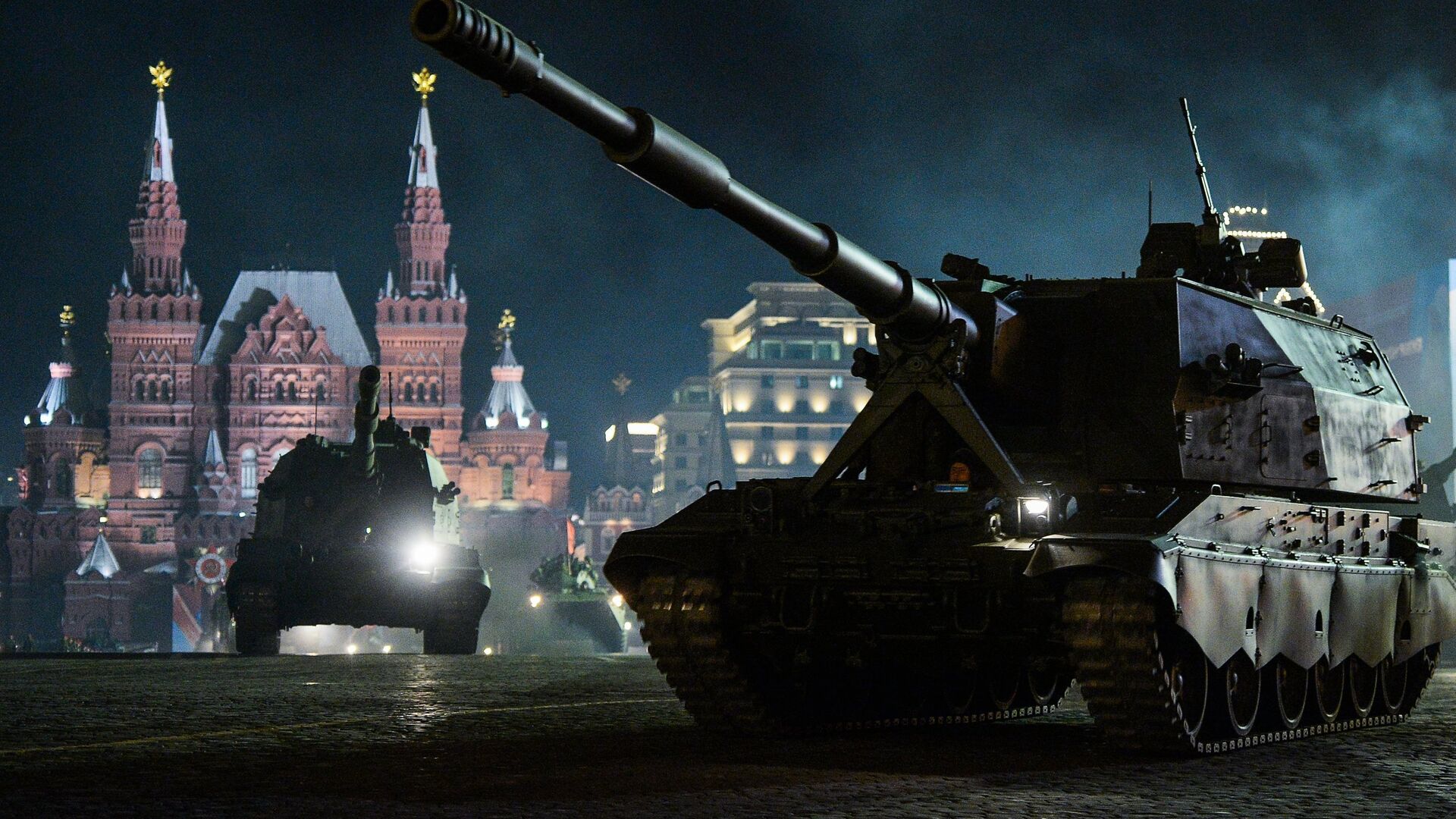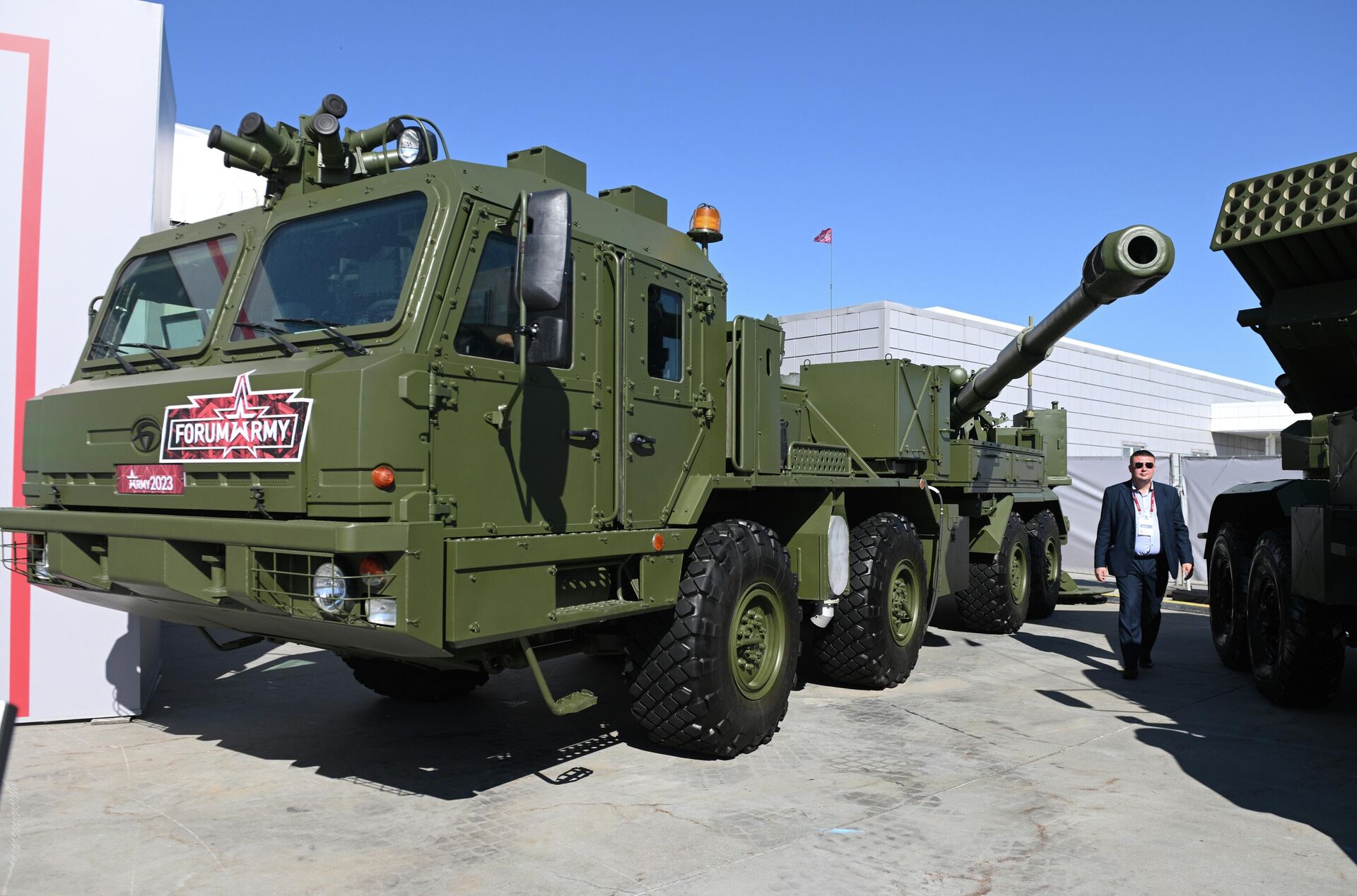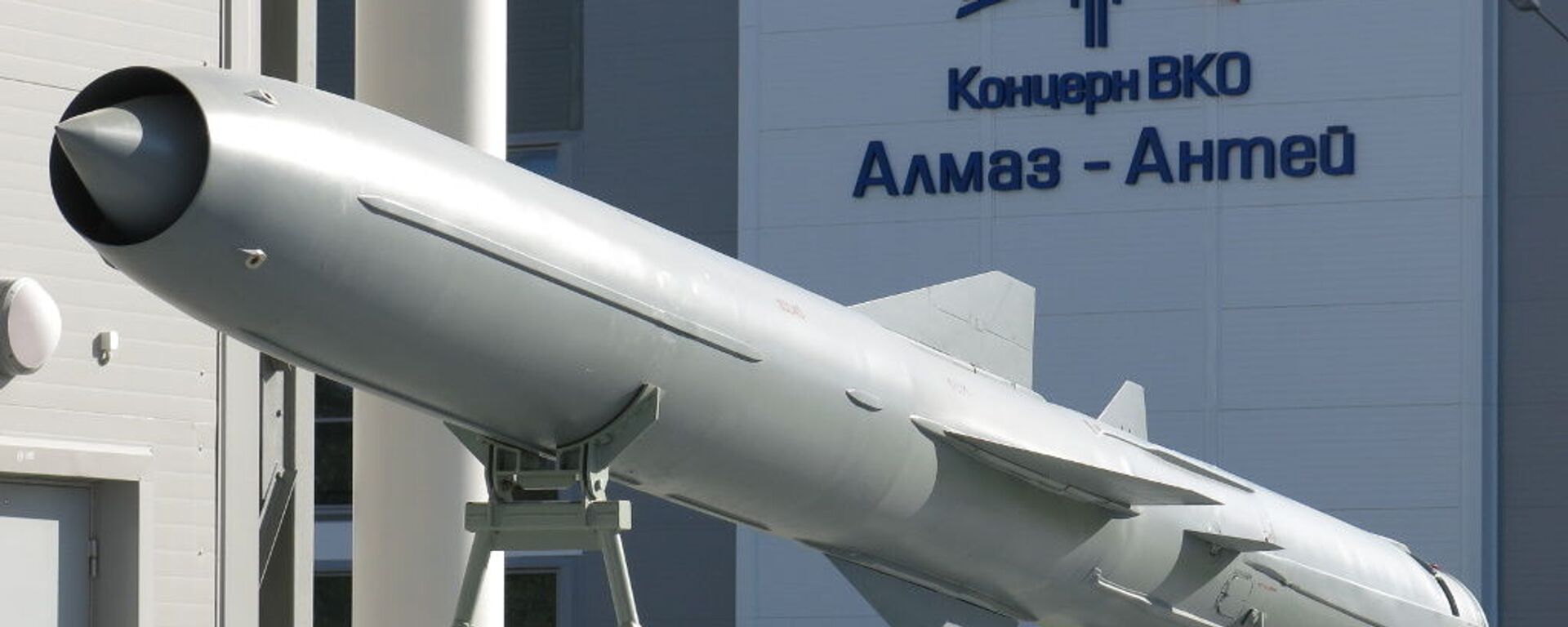https://sputnikglobe.com/20240110/revamped-rearmed-reloaded-arms-that-will-expand-russias-edge-over-nato-in-2024-1116104324.html
Revamped, Rearmed, Reloaded: Arms That Will Expand Russia's Edge Over NATO in 2024
Revamped, Rearmed, Reloaded: Arms That Will Expand Russia's Edge Over NATO in 2024
Sputnik International
NATO stirred up a hornet’s nest when it provoked a proxy war with Russia in Ukraine in 2022, pushing Moscow to overhaul its peacetime military and dramatically increase its size and capabilities. 2023 became the year Russia shattered the myth of NATO weapons’ superiority on the battlefield. What does 2024 have in store? Sputnik explores.
2024-01-10T19:12+0000
2024-01-10T19:12+0000
2024-01-10T19:24+0000
alexei leonkov
military & intelligence
sergei shoigu
russia
ukraine
nato
moscow
stockholm international peace research institute (sipri)
koalitsiya-sv
t-90
https://cdn1.img.sputnikglobe.com/img/103888/01/1038880157_0:184:2984:1863_1920x0_80_0_0_98faab9da9f1598051555329e5dbc946.jpg
Russia will continue to strengthen its defense capabilities through 2024, upgrading its communication, reconnaissance, target designation, counter-battery fire, air defenses and satellite systems, drone warfare capabilities and the readiness of its nuclear triad, Defense Minister Sergei Shoigu said Tuesday in a briefing with top generals.The proxy war against NATO in Ukraine has pushed Russia to increase its Armed Forces’ strength to 1.32 million troops and 2.2 million personnel total – up from one million troops and 1.9 million personnel total in 2022. Further increases may be forthcoming in the coming years.Accompanying the rise in troop numbers is an increase in defense spending, including money for salaries and the development and production of equipment. The Stockholm International Peace Research Institute (SIPRI) calculated last month that Russia’s total defense expenditures would reach about 12.7 trillion rubles, or $140 billion US, in 2024, a 29 percent increase over 2023, for a total of 7.1 percent of the country’s GDP.SIPRI takes the figures as a sign of Moscow’s determination to see the conflict with Ukraine through to the end, even as Kiev’s NATO sponsors show signs of ‘Ukraine fatigue’ after realizing that pouring tens of billions of dollars more into the Ukrainian “black hole” won’t change the proxy war’s outcome, but only prolong the suffering of those caught in the middle.NATO and the US aren’t anywhere close to their stated goal of “weakening Russia” – the strategy outlined by Pentagon chief Lloyd Austin in the spring of 2022, weeks after the West sabotaged a possible Russia-Ukraine peace deal.Instead, the Russian military has emerged stronger than ever in the country’s post-1991 history, with a recent US News & World Report ranking listing Russia the world’s number one military power – above the United States, with the score compiled on the basis of public perceptions of respondents from 87 countries. Sentiments regarding Russia’s military might are no doubt based at least in part on combat experience – a factor whose importance cannot be overstated on the battlefield.2023 became the year Russia smashed the decades-old legend of NATO weapons’ superiority against Soviet and Russian ones, with Moscow proving that its military has the armaments to match almost every alliance weapon fielded in Ukraine, and even some which even the bloc does not, despite spending more than ten times less on defense.New Arms for New YearWith the Zelensky regime showing no signs of interest in peace talks at terms Russia would find acceptable, calling for the mobilization of another 500,000 troops and even planning a new ground offensive, it seems clear that Russia’s defense industry in 2024 will again have to focus first and foremost on frontline weapons systems.2S35 Koalitsiya-SVAmong the new developments Leonkov expects to take center stage is the Koalitsiya-SV, a precision long-range self-propelled gun whose mass delivery to the Armed Forces began in late 2023 after nearly two decades of development.Originally designed as an upgrade to the Soviet-era 2S19 Msta, the Koalitsiya-SV is the latest word in Russian self-propelled gun design, riding on a T-90 tank chassis, and fitted with a 155 mm gun that can fire its 70 onboard rounds up to 70 km (although tests have shown it to maintain accuracy at ranges up to 80 km). The gun has a firing rate of up to 16 rounds per minute.The Koalitsiya-SV has a crew of three, down from five in the Msta, thanks to its automated turret module, which marks a significant new capability for Russian forces, according to Leonkov.The Koalitsiya-SV isn’t alone among the new artillery systems the Russian ground forces are getting in 2024, with the deployment of the new 2S43 Malva 152 mm self-propelled gun system beginning in October 2023 another promising development.Fitted to an 8x8 all-wheel drive truck chassis, the Malva constitutes a new aptitude for Russian weapons designers, with previous Soviet and Russian self-propelled gun designs (including the above-mentioned Koalitsiya-SV) fitted to armored platforms. Developed by the Burevestnik Research Institute and manufactured by Uraltransmash from 2023 onward, the Malva has a firing range of 24.5 km, and uses the same gun as the Msta. But thanks to its reduced weight, the gun can be rapidly shipped to frontline areas aboard heavy transport aircraft like as the Il-76 strategic airlifter.TanksWhen it comes to armor, the T-90 and specifically its modernized T-90M Proryv variants have captured most of the media attention regarding Russia’s tank capabilities, proving itself more than a match for the behemoth Leopard 2, Challenger 2 and Abrams MBTs sent by NATO to Ukraine by the dozens alongside hundreds of older tanks.But while the T-90 has hogged the spotlight, Leonkov urged against discounting efforts by Russian military engineers and tank builders to modernize Russia’s older tanks, including T-80s and even T-72s – a tank design which at its core goes back to the late 1960s.The latest Russian T-72 and T-80 variants, many of them refurbished from the vast tank armories Russia inherited from the USSR, have been modernized to incorporate the latest word in offensive and defensive equipment, from the Arena active protection system, to Refleks-M guided anti-tank missiles launched from the tanks’ main turrets, to digital communications equipment and displays, cameras, and other components bringing the tanks up to snuff with the needs of the modern battlefield.Radio-electronic Warfare and CommunicationsOf course, fitting advanced electronics and upgraded communications systems into legacy weapons and equipment isn’t limited to tanks, with Ukraine’s inundation with advanced NATO drones, radio-electronic warfare and anti-electronic warfare systems – often with the explicit purpose of ‘testing’ them against a peer adversary, giving Russia the impetus to improve its capabilities on these fronts.“This also includes a further improvement of communications systems to ensure that automated control systems can work from the platoon level to the level of whole armies as a single unit. These processes are related, [constituting] the emergence of weapons systems that are in demand among the troops,” the observer said.Tactical and Naval MissilesLeonkov expects Russia to continue to ramp up its production and deployment of precision missiles for strikes deep into enemy territory and against naval targets at long ranges, pointing to the operational success of the essentially unstoppable Kinzhal hypersonic missile, and to the Zircon anti-ship missiles making their way into Russia’s Navy alongside Kalibr cruise and Onyx anti-ship missiles.But experience in Ukraine has shown that it doesn’t take the latest and greatest missiles to defeat NATO’s air defenses, with Ukrainian Air Force Command spokesman Yuri Ignat admitting late last month that his forces haven’t ever downed even one of the estimated 300 1960s vintage Kh-22 air-launched cruise missiles fired into the country by Russia over the past 22 months.New Arms for Strategic StabilityIn his remarks with defense officials on Tuesday, Defense Minister Shoigu confirmed that the Russian military’s mission in 2024 would include strengthening Russia’s nuclear triad. “One of the key tasks is maintaining the combat readiness of the nuclear triad at the highest level, which ensures a strategic balance in the world,” he said.Russia made the determination to modernize and upgrade its strategic arsenal in the early 2000s, immediately following the US’s decision to withdraw from the Anti-Ballistic Missile Treaty. After this, Russian rocket scientists dusted off Soviet-era plans for a series of superweapons, including hypersonic missiles, nuclear-powered torpedoes and cruise missiles, and laser weaponry, while the state also invested heavily into traditional intercontinental ballistic and submarine-launched missiles.These efforts, carried out in the shadow of decades of NATO expansion toward Russia’s borders and threats to place offensive weapons just minutes flight time from major Russian cities, were meant to cool heads in the Pentagon against the idea of blanketing Russia with conventional cruise missile strikes to declaw its nuclear potential and decapitate its leadership.Ground-based Ballistic MissilesGetting to 100 percent will include the continued deployment of the new RS-28 Sarmat ICBM on combat duty, as well as replacement of older missiles with Yars ICBMs, Leonkov said.Both new missiles can be equipped with multiple independently targetable reentry vehicles, decoys to overwhelm missile defenses, and Avangard hypersonic glide vehicles – which can accelerate to blazing-fast speeds up to Mach-27 and can’t be stopped by any existing or prospective defenses.Modernized Tu-160 Strategic BombersIn 2024, Russia’s Aerospace Forces are expected to take delivery of two new upgraded Tu-160M White Swan strategic bombers, bringing the total inventory to 18, and taking the late Soviet-designed aircraft into the 21st century thanks to what Leonkov characterized as an effort to turn the Tu-160 into a “digital airplane.”Whatever upgrades happen to be made, the Tu-160s’ core mission will not change – striking enemy targets such as carrier groups, at standoff ranges and escaping at high speeds (up to Mach 2.01) before they can be intercepted and destroyed.Boomer SubsFinally, at sea, Russia’s plans for 2024 include taking delivery of the Knyaz Pozharskiy, a new Borei A-class nuclear-powered ballistic missile submarine armed with Bulava-M SLBMs that’s expected to be launched at the end of January, and commissioned with the Northern Fleet before the end of the current year. Russia expects to receive a complement of 12 Borei subs total by 2031, with the vessels to play a key role in the country’s sea-based nuclear deterrent.Overall, Leonkov believes that if one were to compare Russia’s nuclear triad capabilities to the US – which is engaged in its own $2 trillion nuclear modernization program, America’s efforts are nothing short of a “complete mess.”
https://sputnikglobe.com/20240108/pentagon-says-austin-remaining-in-hospital-no-specific-date-for-his-release-1116045968.html
https://sputnikglobe.com/20230831/watch-russian-t-72-b3-tank-in-combat-in-special-op-zone-1113018411.html
https://sputnikglobe.com/20231129/russia-develops-compact-friend-or-foe-system-for-identifying-drones-1115277258.html
https://sputnikglobe.com/20230614/which-russian-weapons-systems-have-built-in-ai-1111158825.html
https://sputnikglobe.com/20231217/watch-russian-forces-employ-yars-icbms-in-military-exercise-1115650398.html
https://sputnikglobe.com/20231215/new-us-ballistic-missile-program-faces-cancellation-amid-budget-tightening-1115599043.html
russia
ukraine
moscow
Sputnik International
feedback@sputniknews.com
+74956456601
MIA „Rossiya Segodnya“
2024
News
en_EN
Sputnik International
feedback@sputniknews.com
+74956456601
MIA „Rossiya Segodnya“
Sputnik International
feedback@sputniknews.com
+74956456601
MIA „Rossiya Segodnya“
what are russia's new military capabilities in 2024, what new weapons will russia get in 2024
what are russia's new military capabilities in 2024, what new weapons will russia get in 2024
Revamped, Rearmed, Reloaded: Arms That Will Expand Russia's Edge Over NATO in 2024
19:12 GMT 10.01.2024 (Updated: 19:24 GMT 10.01.2024) NATO stirred up a hornet’s nest when it provoked a proxy war with Russia in Ukraine in 2022, pushing Moscow to overhaul its peacetime military and dramatically increase its size and capabilities. 2023 became the year Russia shattered the myth of NATO weapons’ superiority on the battlefield. What does 2024 have in store? Sputnik explores.
Russia will continue to strengthen its defense capabilities through 2024, upgrading its communication, reconnaissance, target designation, counter-battery fire, air defenses and satellite systems, drone warfare capabilities and the readiness of its nuclear triad, Defense Minister Sergei Shoigu
said Tuesday in a briefing with top generals.
“Solving these and other tasks will allow us to increase the combat capabilities of the Armed forces and ensure deterrence against aggression against our country and its allies,” Shoigu said.
The proxy war against NATO in Ukraine has pushed Russia to increase its Armed Forces’ strength to 1.32 million troops and 2.2 million personnel total – up from one million troops and 1.9 million personnel total in 2022. Further increases may be forthcoming in the coming years.
Accompanying the rise in troop numbers is an increase in defense spending, including money for salaries and the development and production of equipment. The Stockholm International Peace Research Institute (SIPRI) calculated last month that
Russia’s total defense expenditures would reach about 12.7 trillion rubles, or $140 billion US, in 2024, a 29 percent increase over 2023, for a total of 7.1 percent of the country’s GDP.
SIPRI takes the figures as a sign of Moscow’s determination to see the conflict with Ukraine through to the end, even as Kiev’s NATO sponsors show signs of
‘Ukraine fatigue’ after
realizing that pouring tens of billions of dollars more into the Ukrainian
“black hole” won’t change the proxy war’s outcome, but only prolong the suffering of those caught in the middle.
NATO and the US aren’t anywhere close to their stated goal of “weakening Russia” – the strategy outlined by Pentagon chief Lloyd Austin in the spring of 2022, weeks after the West sabotaged a possible Russia-Ukraine peace deal.
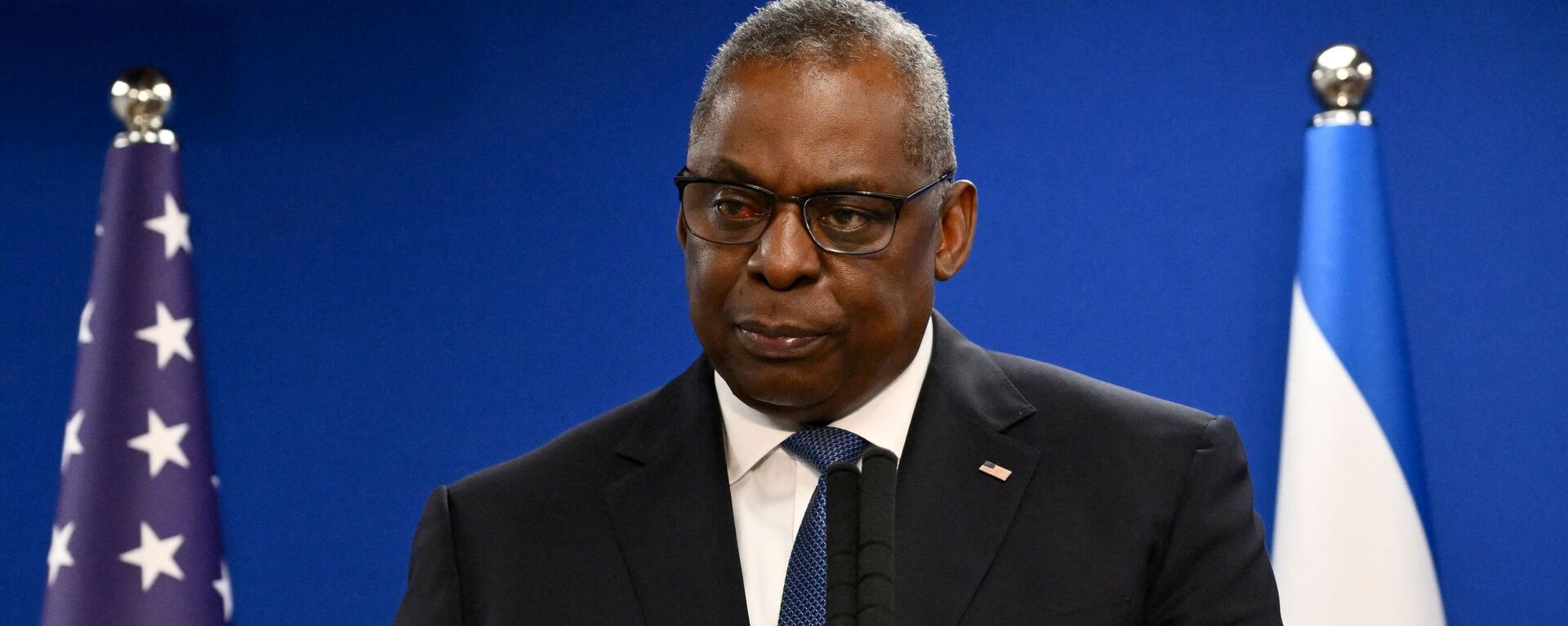
8 January 2024, 01:49 GMT
Instead, the Russian military has emerged stronger than ever in the country’s post-1991 history, with a recent US News & World Report ranking listing Russia the world’s number one military power – above the United States, with the score
compiled on the basis of public perceptions of respondents from 87 countries. Sentiments regarding Russia’s military might are no doubt based at least in part on combat experience – a factor whose importance
cannot be overstated on the battlefield.
That said, the quality of Russia’s weapons, particularly when they are produced in sufficient numbers, similarly can't be discounted, especially in a situation of high-intensity warfare, like in Ukraine, and even more-so when it concerns having to fight forces armed and equipped by NATO - which touts itself as the largest, wealthiest and most technologically advanced alliance in history.
2023
became the year Russia smashed the decades-old legend of NATO weapons’ superiority against Soviet and Russian ones, with Moscow proving that its military has the armaments to match almost every alliance weapon fielded in Ukraine, and even some which even the bloc does not, despite spending more than ten times less on defense.
With the Zelensky regime
showing no signs of interest in peace talks at terms Russia would find acceptable, calling for the mobilization of another 500,000 troops and even planning a new ground offensive, it seems clear that Russia’s defense industry in 2024 will again have to focus first and foremost on frontline weapons systems.
“Of course, when we’re talking about conventional weapons, today the focus has been toward a gradual shift to high-precision weapons. I’m talking specifically about artillery and multiple launch rocket systems,” Alexey Leonkov, a leading Russian military analyst, told Sputnik, when asked to comment on the capabilities Russia is expected to receive in the new year.
Among the new developments Leonkov expects to take center stage is the Koalitsiya-SV, a precision long-range self-propelled gun whose mass delivery to the Armed Forces began in late 2023 after nearly two decades of development.
Originally designed as an upgrade to the Soviet-era 2S19 Msta, the Koalitsiya-SV is the latest word in Russian self-propelled gun design, riding on a T-90 tank chassis, and fitted with a 155 mm gun that can fire its 70 onboard rounds up to 70 km (although tests have shown it to maintain accuracy at ranges up to 80 km). The gun has a firing rate of up to 16 rounds per minute.
The Koalitsiya-SV has a crew of three, down from five in the Msta, thanks to its automated turret module, which marks a significant new capability for Russian forces, according to Leonkov.
“We are factually getting a high-precision artillery system, since target positioning occurs automatically, and firing takes place in automatic mode. Because of this, the rate of fire of this particular artillery piece increases,” the observer explained. “At the same time, the trajectory of shots can be made such that all shells hit the same target. For this reason, the well-known saying [among Soviet and Russian artillerymen, ed.] that ‘a shell does not hit the same crater twice’ does not apply to the Koalitsiya-SV,” with the system capable of hitting even moving targets if paired with a targeting drone.
The Koalitsiya-SV isn’t alone among the new artillery systems the Russian ground forces are getting in 2024, with the deployment of the new 2S43 Malva 152 mm self-propelled gun system beginning in October 2023 another promising development.
Fitted to an 8x8 all-wheel drive truck chassis, the Malva constitutes a new aptitude for Russian weapons designers, with previous Soviet and Russian self-propelled gun designs (including the above-mentioned Koalitsiya-SV) fitted to armored platforms. Developed by the Burevestnik Research Institute and manufactured by Uraltransmash from 2023 onward, the Malva has a firing range of 24.5 km, and uses the same gun as the Msta. But thanks to its reduced weight, the gun can be rapidly shipped to frontline areas aboard heavy transport aircraft like as the Il-76 strategic airlifter.
When it comes to armor, the T-90 and specifically its modernized
T-90M Proryv variants have
captured most of the media attention regarding Russia’s tank capabilities, proving itself more than a match for the behemoth Leopard 2, Challenger 2 and Abrams MBTs sent by NATO to Ukraine by the dozens alongside hundreds of older tanks.
But while the T-90 has hogged the spotlight, Leonkov urged against discounting efforts by Russian military engineers and tank builders to modernize Russia’s older tanks, including T-80s and even T-72s – a tank design which at its core goes back to the late 1960s.
“Some have said that the age of tanks is over, but we have yet to use armored divisions consisting of 323 main battle tanks [apiece] in an offensive during the special military operation,” Leonkov said, believing Russian armor has yet to demonstrate its true capabilities.
The latest Russian T-72 and T-80 variants, many of them refurbished from the vast tank armories Russia inherited from the USSR, have been modernized to incorporate the latest word in offensive and defensive equipment, from the Arena active protection system, to Refleks-M guided anti-tank missiles launched from the tanks’ main turrets, to digital communications equipment and displays, cameras, and other components bringing the tanks up to snuff with the needs of the modern battlefield.
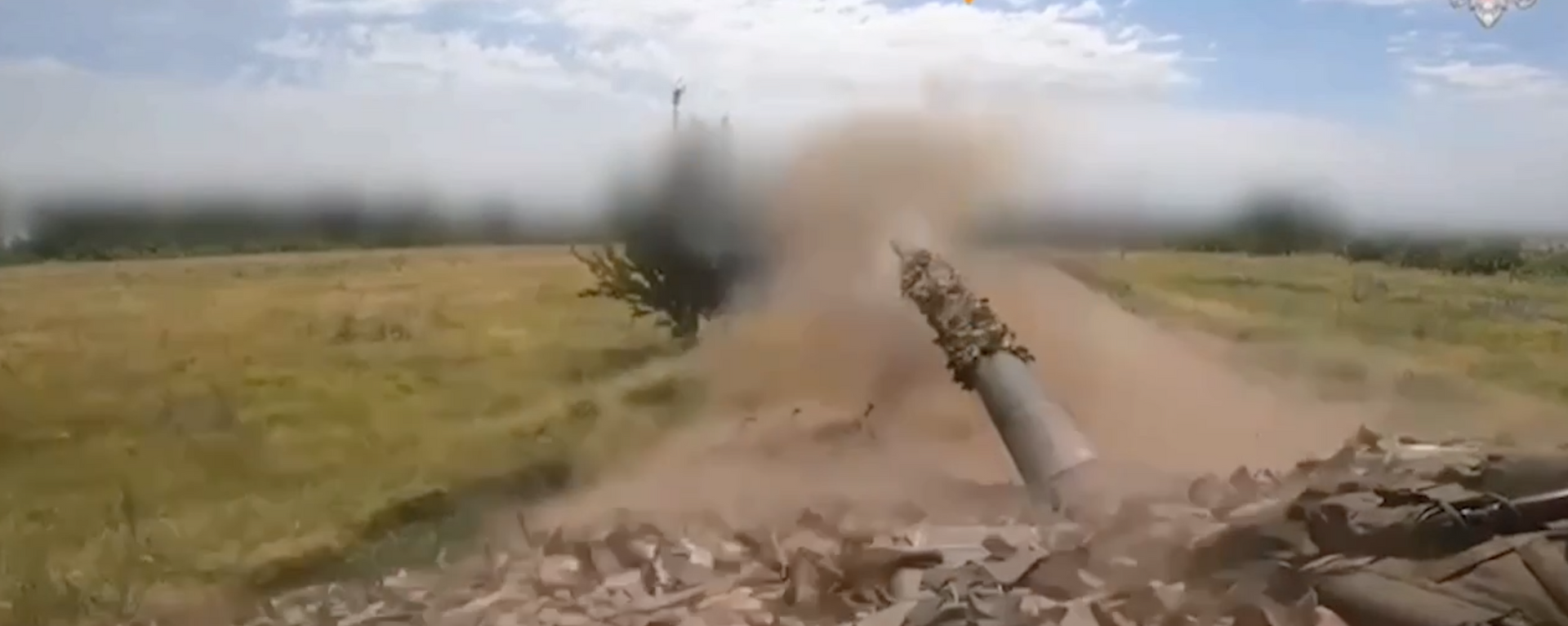
31 August 2023, 12:54 GMT
Radio-electronic Warfare and Communications
Of course, fitting advanced electronics and upgraded communications systems into legacy weapons and equipment isn’t limited to tanks, with Ukraine’s inundation with advanced NATO drones, radio-electronic warfare and anti-electronic warfare systems –
often with the explicit purpose of ‘testing’ them against a peer adversary, giving Russia the impetus to improve its capabilities on these fronts.
“This includes an emphasis on further improving air defense systems, particularly in terms of combating various types of drones. This includes the improvement of electronic warfare systems. Previously, for example, individual electronic warfare systems were available only in aviation and were part of airborne defense complexes. Now, such systems are also appearing to protect armored vehicles,” Leonkov said, pointing to the array of new mobile, truck-based EW equipment appearing among the Russian ground forces.
“This also includes a further improvement of communications systems to ensure that automated control systems can work from the platoon level to the level of whole armies as a single unit. These processes are related, [constituting] the emergence of weapons systems that are in demand among the troops,” the observer said.

29 November 2023, 10:57 GMT
Tactical and Naval Missiles
Leonkov expects Russia to continue to ramp up its production and deployment of precision missiles for strikes deep into enemy territory and against naval targets at long ranges, pointing to the operational success of the essentially unstoppable Kinzhal hypersonic missile, and to the Zircon anti-ship missiles making their way into Russia’s Navy alongside Kalibr cruise and Onyx anti-ship missiles.
But experience in Ukraine has shown that it doesn’t take the latest and greatest missiles to defeat NATO’s air defenses, with Ukrainian Air Force Command spokesman Yuri Ignat admitting late last month that his forces haven’t ever downed even one of the estimated 300 1960s vintage
Kh-22 air-launched cruise missiles fired into the country by Russia over the past 22 months.
New Arms for Strategic Stability
In his remarks with defense officials on Tuesday, Defense Minister Shoigu confirmed that the Russian military’s mission in 2024 would include strengthening Russia’s nuclear triad. “One of the key tasks is maintaining the combat readiness of the nuclear triad at the highest level, which ensures a strategic balance in the world,” he said.
Russia made the determination to modernize and upgrade its strategic arsenal in the early 2000s, immediately following the US’s decision to withdraw from the Anti-Ballistic Missile Treaty. After this, Russian rocket scientists dusted off Soviet-era plans for a series of superweapons, including hypersonic missiles, nuclear-powered torpedoes and cruise missiles, and laser weaponry, while the state also invested heavily into traditional intercontinental ballistic and submarine-launched missiles.
These efforts, carried out in the shadow of decades of NATO expansion toward Russia’s borders and threats to place offensive weapons just minutes flight time from major Russian cities, were meant to cool heads in the Pentagon against the idea of blanketing Russia with conventional cruise missile strikes to declaw its nuclear potential and decapitate its leadership.
Ground-based Ballistic Missiles
“We have upgraded our nuclear shield by almost 95 percent, and there are only a few components left to take it to 100 percent,” Leonkov said, referring to President Putin’s
comments at a meeting of the Defense Ministry Board in December on the ongoing program to modernize Russian strategic deterrent capabilities.
Getting to 100 percent will include the continued deployment of the new RS-28 Sarmat ICBM on combat duty, as well as replacement of older missiles with Yars ICBMs, Leonkov said.
Both new missiles can be equipped with multiple independently targetable reentry vehicles, decoys to overwhelm missile defenses, and Avangard hypersonic glide vehicles – which can accelerate to blazing-fast speeds up to Mach-27 and can’t be stopped by any existing or prospective defenses.

17 December 2023, 22:03 GMT
Modernized Tu-160 Strategic Bombers
In 2024, Russia’s Aerospace Forces are expected to take delivery of two new upgraded Tu-160M White Swan strategic bombers, bringing the total inventory to 18, and taking the late Soviet-designed aircraft into the 21st century thanks to what Leonkov characterized as an effort to turn the Tu-160 into a “digital airplane.”
“Of course, a great deal will be improved thanks to digital technology – more advanced engines, more advanced engine control systems and other systems. A digitized airborne defense complex will protect the aircraft against all kinds of air-to-air missiles. Thanks to the characteristics of its engines – including a different layout, the combat radius of the Tu-160M2 will be increased,” the observer said.
Whatever upgrades happen to be made, the Tu-160s’ core mission will not change – striking enemy targets such as carrier groups, at standoff ranges and escaping at high speeds (up to Mach 2.01) before they can be intercepted and destroyed.
Finally, at sea, Russia’s plans for 2024 include taking delivery of the Knyaz Pozharskiy, a new Borei A-class nuclear-powered ballistic missile submarine armed with Bulava-M SLBMs that’s expected to be launched at the end of January, and commissioned with the Northern Fleet before the end of the current year. Russia expects to receive a complement of 12 Borei subs total by 2031, with the vessels to play a key role in the country’s sea-based nuclear deterrent.
“The peculiarity of strategic missile submarines is that they launch their payloads using the so-called ‘dry launch’ technology. When a missile launches, the boat does not reveal its location,” leaving them shrouded in the fog of war and thereby posing a serious strategic threat, Leonkov said.
Overall, Leonkov believes that if one were to compare Russia’s nuclear triad capabilities to the US – which is engaged in its own
$2 trillion nuclear modernization program, America’s efforts are nothing short of a “complete mess.”
“Their program to replace the Minutemen isn’t panning out. The B-52 has had another life extension almost to the 2050s, when the bomber will mark its 100th anniversary. The B-21 program is stalled, and in any case will be inferior to our Tu-160M2. And it’s obvious that under the conditions of sanctions in which we are creating these modern weapons systems, our achievements look impressive, compared to the Americans, who are trying to make their military-industrial complex work properly even in favorable conditions which they have created for themselves,” the Russian observer summed up.

15 December 2023, 15:24 GMT
